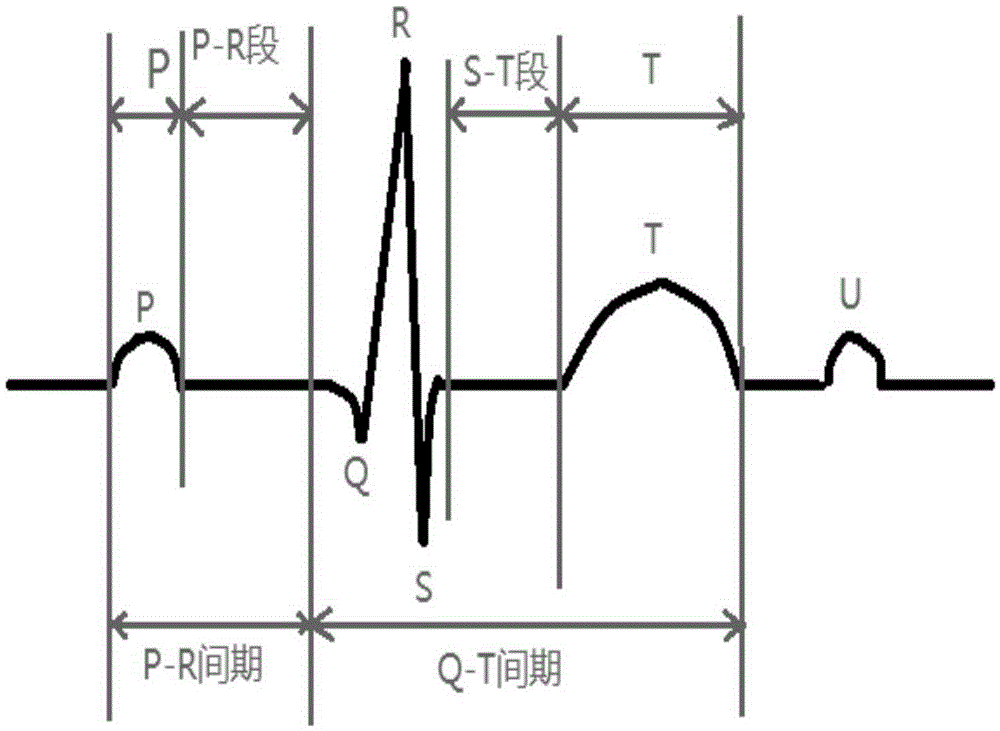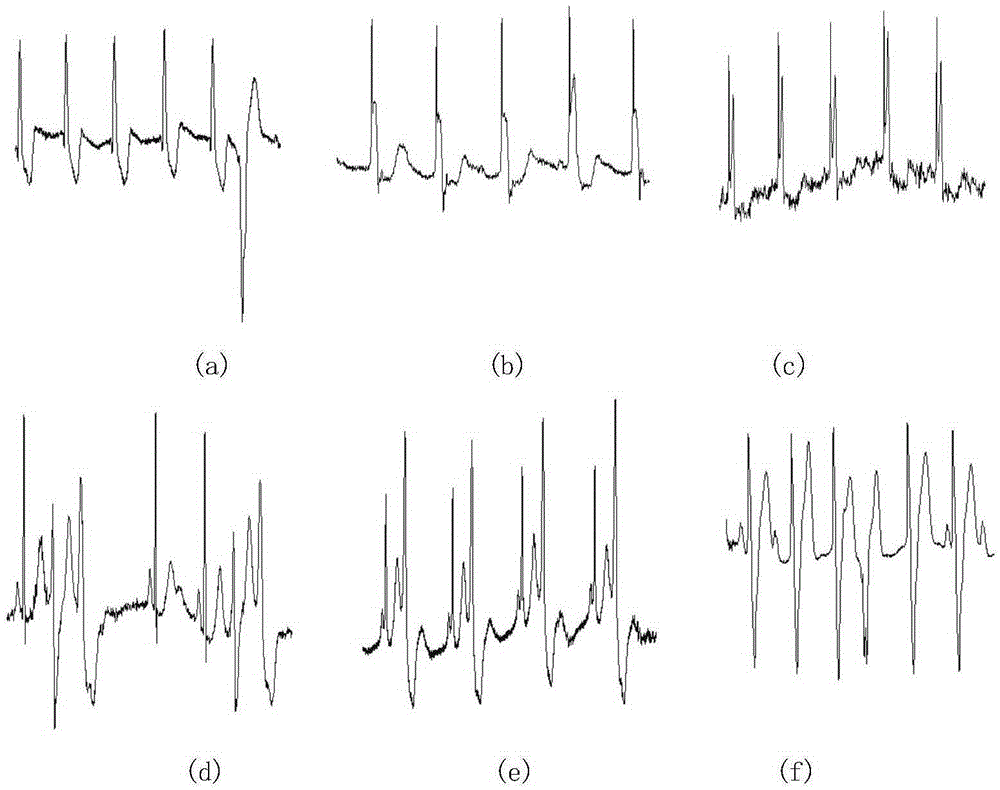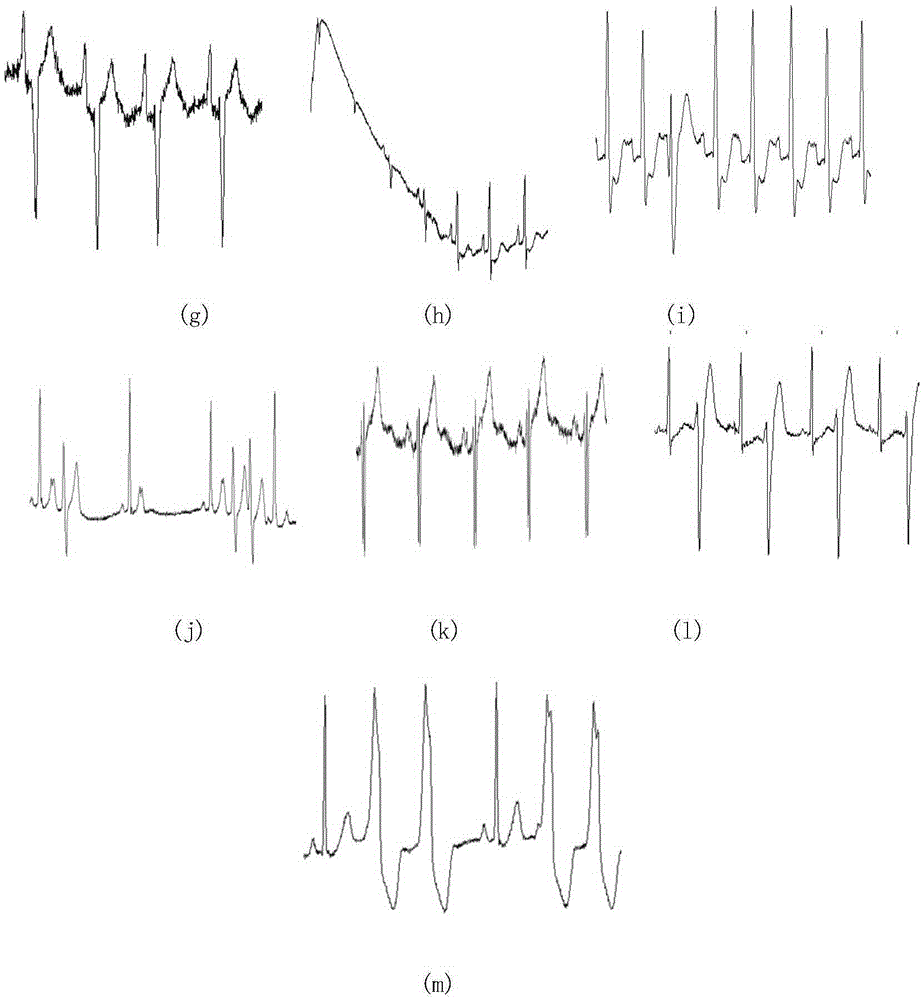R wave rapid detection method adaptive to electrocardiogram waveform pathological change
A detection method and electrocardiographic wave technology, applied in the field of monitoring technology, can solve problems such as poor processing effect and reduced algorithm operation efficiency, and achieve the effects of reducing impact, preventing arrhythmia, and reducing thresholds
- Summary
- Abstract
- Description
- Claims
- Application Information
AI Technical Summary
Problems solved by technology
Method used
Image
Examples
Embodiment Construction
[0024] The present invention will be further described in detail in conjunction with the accompanying drawings and embodiments.
[0025] The present invention can obtain the R wave position of ECG signal in real time as follows:
[0026] (1) Filter the collected original signal, the filter used is a second-order Butterworth band-pass filter, and the cut-off frequency is selected as 3-25HZ to remove baseline drift and process high-order noise and power frequency to a certain extent Interference, filtering effects such as image 3 .
[0027] (2) Signal feature extraction and enhancement:
[0028] Firstly, the processed signal is first-order differenced and squared to expose the changing characteristics of the signal and attribute different changing signals to the same dimension: use the forward difference formula to calculate the first-order difference of the filtered ECG signal, the formula used is
[0029] Δx n =x n+1 -x n =x'(ξ),(x n n+1 )
[0030] The resulting diffe...
PUM
 Login to View More
Login to View More Abstract
Description
Claims
Application Information
 Login to View More
Login to View More - R&D
- Intellectual Property
- Life Sciences
- Materials
- Tech Scout
- Unparalleled Data Quality
- Higher Quality Content
- 60% Fewer Hallucinations
Browse by: Latest US Patents, China's latest patents, Technical Efficacy Thesaurus, Application Domain, Technology Topic, Popular Technical Reports.
© 2025 PatSnap. All rights reserved.Legal|Privacy policy|Modern Slavery Act Transparency Statement|Sitemap|About US| Contact US: help@patsnap.com



